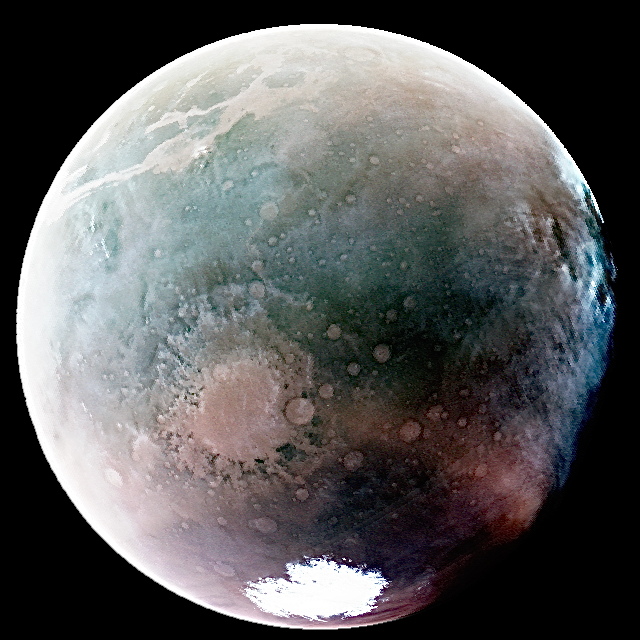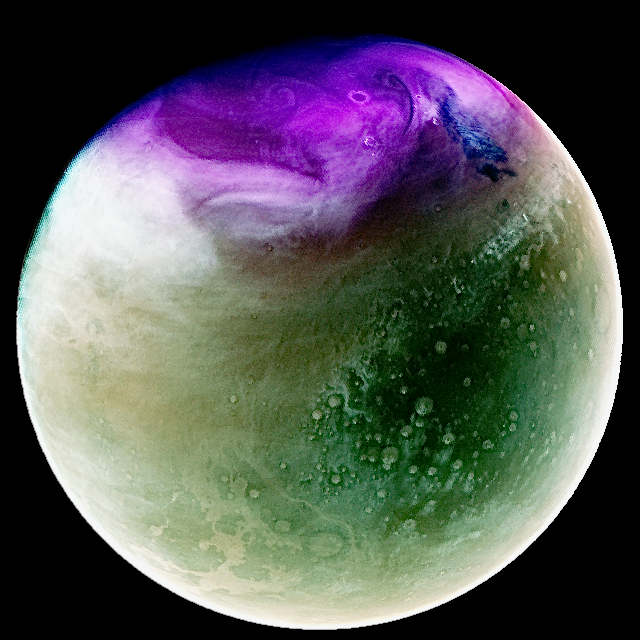
Mars – famously red and dusty – has just had a makeover in new, stunning images released by NASA.
Coming from the NASA’s Mars Atmosphere and Volatile Evolution (MAVEN) mission, the agency was able to light up the planet in ultraviolet lights.
This wasn’t just for the aesthetics – although, it does look lovely – scientists used it to examine the planet’s atmosphere and its surface features, as part of a wider MAVEN investigation to understand “Mars’ atmosphere and climate, liquid water, and planetary habitability”.
The imaging instrument’s measurements are actually invisible to the human eye, so they’ve been amplified with different brightness – red, green and blue.
That makes atmosphere ozones look purple or pink, clouds or haze look white or blue, and the surface look green or tan (instead of the usual dusty red).
Both of these images were taken when the planet was near opposite ends of its elliptical orbit around the Sun. For context, it takes Mars 687 days to travel around the Sun, compared to the Earth’s much faster 365.
So, the image at the top of this article was snapped in July 2022, showing the southern hemisphere’s summer – when Mars is closest to the Sun.
Much like Earth, Mars has seasons because the planet sits on a rotational axis.
Valles Marineris, a deep canyon, is visible at the top left, while a deep crater, Argyre Basin, is depicted as pale pink towards the bottom left.
The white patch is the southern polar ice cap. It’s small because of the summer temperatures.
The image below was taken in January 2023, and shows Mars’ northern hemisphere, just after it had gone after its farthest point in its orbit.
According to NASA, the seasons change very quickly in this northern region which leads to a lot of white clouds.
Ozone has built up in the north because of the cold, polar nights, which is why the top of the planet looks bright purple – this then breaks down later in the year.
The canyons of Valles Marineris are in the lower left in this picture, again appearing in a tan colour.

